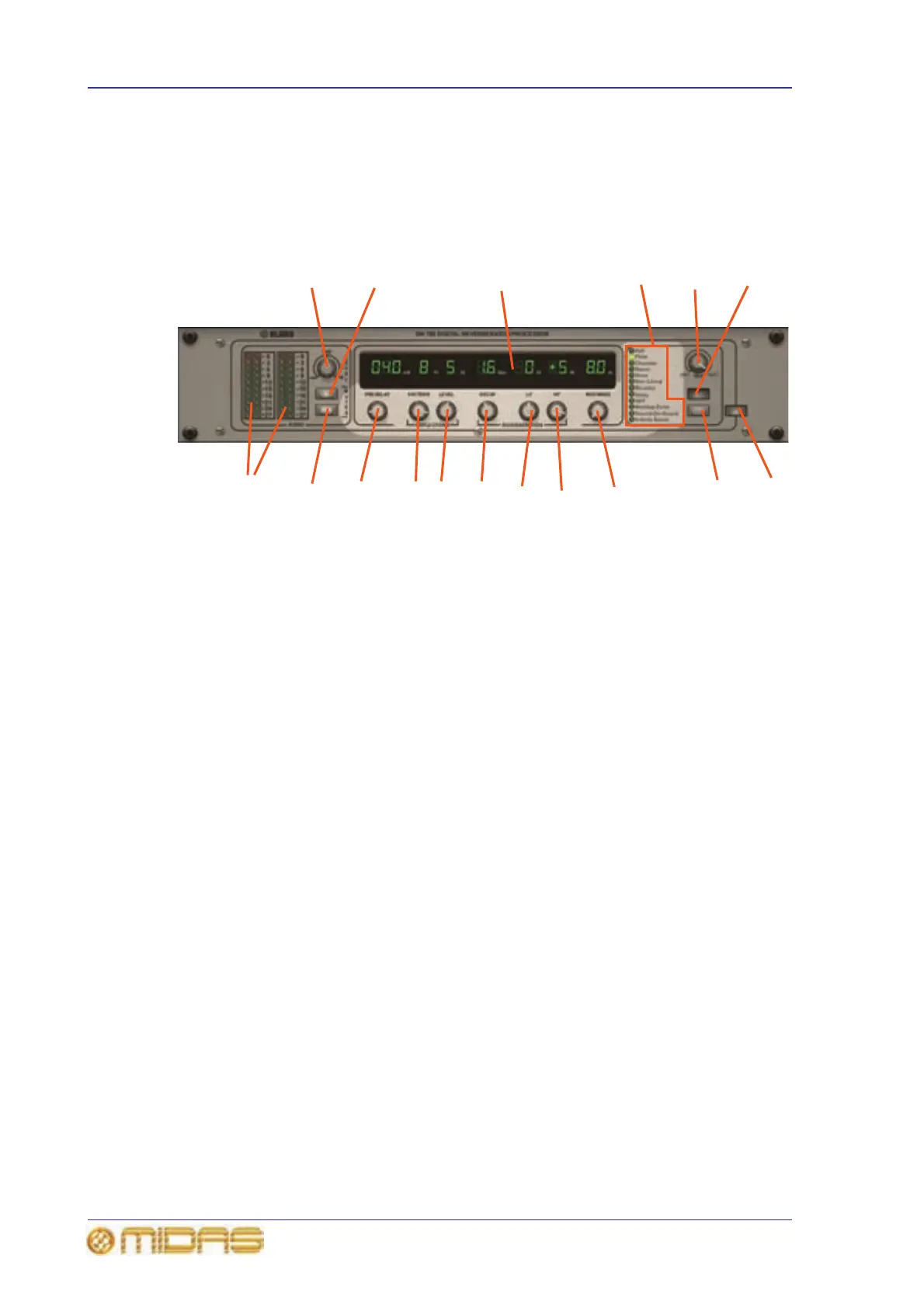Reverberator/Processor unit. The DN780 is not just a reverberation device, it also gives
the user a unique and flexible means of producing realistic acoustic simulations for
environments of all types and sizes. The provision of effects programs further extends
1 LF (low frequency) control knob adjusts
the decay time at the low end of the reverb
spectrum; ranges from -7 to +7.
2 HF (high frequency) control knob adjusts
the decay time at the high end of the reverb
spectrum, which sets the absorption
characteristic of the simulated space. Ranges
from -7 to +7.
3 ROOMSIZE control knob adjusts the
average dimension of the simulated space;
ranges from 8 to 90 metres. A momentary
mute is implemented when this control is
adjusted.
4 DECAY control knob sets the overall
(mid-band) reverberation decay time; ranges
from 0.1 to 18 seconds, depending on room
size.
5 LEVEL control knob acts as a ‘depth’
control by altering the apparent distance
between the sound source and the listener.
Alternatively, adjusts the input level for Sound-
On-Sound/Infinite Room. Range is from 0 to 9.
6 PATTERN control knob controls the
‘density’ of early reflections. Selects the
number and spacing of Early Reflections/ADT/
Multi-tap delays; ranges from 1 to 9.
7 PRE DELAY control knob for controlling
the amount of delay (in milliseconds) between
the initial signal and the onset of
reverberation. On certain program types, pre-
delay is inserted between early reflections and
reverb to improve authenticity. Its range is
algorithm dependent.
Low level, phase-dependent ‘clicks’ are
produced when pre-delay is altered during the
program.
8 List of algorithms, which emulate the ones
on the original DN780.
9 MIX control knob controls the DRY/WET
output mix and ranges from 0% t0 100%,
respectively.
10 ST stereo input button. Enhancement of
original algorithm to provide stereo input.
11 Algorithm select button for selecting the
required algorithm.
12 Parameter display panel: shows the
current settings for the selected algorithm.
13 IN button for switching in the Virtual
DN780 Reverb effect.
14 Input level: LEVEL control knob for
adjusting the input level; ranges from -
4 to
+6dB, with 0dB at top dead centre. This
should be set to illuminate the -3dB LED on the
input headroom indicator during loud program
passages.
15 Input mute: IN button for removing feed
to the reverberation section, enabling the
decay qualities of the chosen setting to be
confirmed.
16 Reverb mute: REV button for providing
a rapid means of removing unwanted sounds.
17 Input headroom indicator: Two
dual-column peak reading LED meters, ranging
from 0dB to -27dB in 3dB steps. Each column
consists of 10 coloured LEDs. The red LED
illuminates at 3dB before the clipping point,
which also provides an over-range warning for
the arithmetical processor.
7
6
5
4
2
3
8
9
10
11
12
1
13
14
15
16
17

